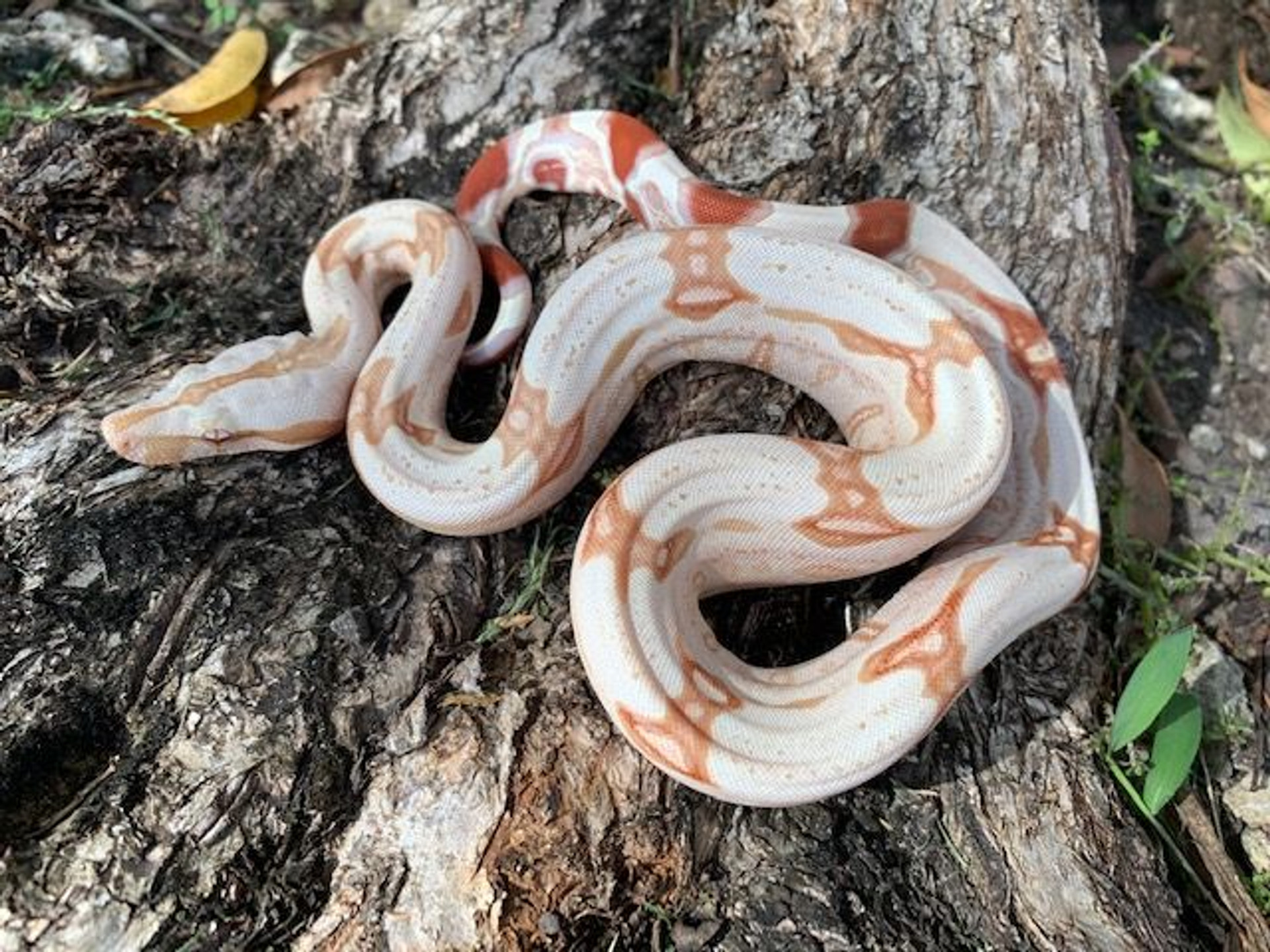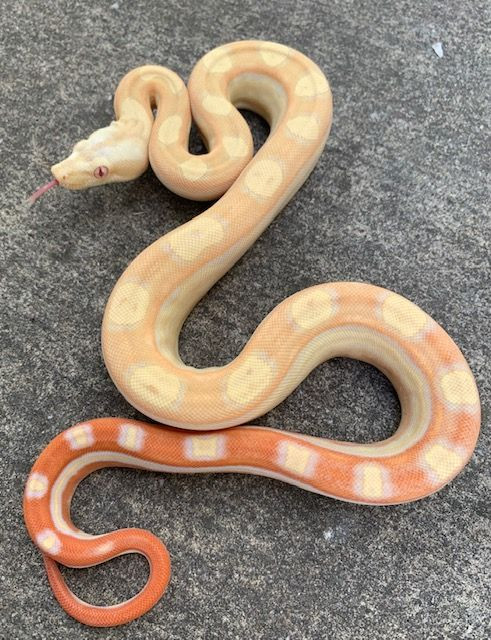

Unlike common and red-tailed boas, rosy boas ( Charina trivirgata) are quite small – most measure less than 3 feet in length. Additionally, while many individuals are quite tame, red-tailed boas are generally not as docile as common boas. This, combined with the fact that red-tailed boas are a bit more challenging to maintain and typically more nervous than common boas, makes them better suited for keepers with a bit of experience. Red-tailed boas are bred in captivity with some regularity, but a significant percentage of those in the pet trade are still wild-caught, imported animals. True red-tailed boas typically cost a bit more than their common cousins, but this varies a bit based on the location from which the red-tailed boa hails (they differ quite a bit across their range). Red-tailed boas aren’t quite as common in captivity as common boas, but they’re readily available for hobbyists seeking them out. Red-tailed boas tend to possess sharper markings and brighter coloration (particularly around the tail), and some grow larger than common boas too. Red-tailed boas are quite similar to common boas in many ways, but many reptile enthusiasts strongly prefer the former to the latter. The term red-tailed boa is often mistakenly applied to common boas, but true red-tailed boas are actually a different subspecies: Boa constrictor constrictor. However, given their large size, we’d hesitate to characterize them as “beginner” snakes. Like all other boas, common boas are livebearers, who often produce large litters after lengthy gestation periods.Ĭommon boas are relatively easy to maintain, and captive-bred individuals usually eat readily. Some males will never exceed 4 feet in length, but female specimens may occasionally measure 9 feet in length or more and weigh up to 50. But this varies, and these snakes also exhibit sexual dimorphism – females reach much larger sizes than males.

However, captive bred specimens generally live up to their reputation for being tame, particularly if they are raised from a young age and handled gently and consistently over time.īoas probably average about 6 or 7 feet in length. This varies greatly from one animal to the next, as some are quite defensive and willing to bite if threatened. However, the majority of common boas kept in captivity today are born and bred in captivity.Īnother reason for the popularity of common boas is their often-docile nature. Nevertheless, even in our modern, interconnected world, common boas remain some of the most popular constrictors in the pet trade. This is due in part to their close proximity to the United States – African and Indonesian constrictors are simply found farther away and were therefore more difficult to obtain in the past. In fact, some that are found living on islands – such as the Hog Island boa – are colored quite differently than typical members of the group.īoas have been common among snake-keeping enthusiasts for decades. Though they are all the same subspecies, they differ relatively significantly in terms of color, pattern and size across this vast range. Most live in forests of one variety or another, but some are found in residential areas, open swamps, lake margins, or wide-open fields and savannas. While a few things about boa species popularity may be hard to pin down with certainty, one thing is undeniable: The common boa ( Boa constrictor imperator) is the most commonly kept boa among reptile enthusiasts.Ĭommon boas range from Mexico to central South America, and they inhabit a variety of different habitats across this range. There aren’t any official statistics regarding which boa species and subspecies are most commonly kept by reptile enthusiasts, but we believe the following seven are likely to be the most popular. The Seven Boa Constrictor Species Most Commonly Kept as Pets Just know that we mean “ types of boas most commonly kept as pets.” Some of the animals below are actually different subspecies or geographic variants, rather than different species. We want to familiarize our readers with the types of boas that are commonly available in the pet trade.Īccordingly, we’re not getting bogged down in taxonomic issues surrounding how some species are defined. Quick Disclaimer: We’re Using “Species” Broadly The Seven Boa Constrictor Species Most Commonly Kept as Pets.Quick Disclaimer: We’re Using “Species” Broadly.


 0 kommentar(er)
0 kommentar(er)
